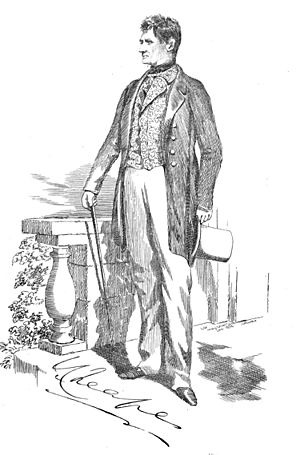John Cheape facts for kids
Sir John Cheape was a Scottish military officer who served in the British army in India. He was known for his leadership and engineering skills during important wars in the 1800s. He helped the British East India Company expand its control in India and Burma.
Contents
Life and Military Career
Early Years and First Battles
John Cheape was born in Scotland on October 5, 1792. He went to military schools at Woolwich and Addiscombe. In 1809, he joined the Bengal Engineers as a second lieutenant. This was a special group of soldiers who were also engineers.
His first experiences in battle were during the Third Anglo-Maratha War. He helped in the sieges of Dhamoni and Mondela in 1815 and 1816. A siege is when an army surrounds a place to try and capture it. He also served in what is now Madhya Pradesh in 1817 and was part of the siege of Asirgarh in 1818. He was promoted to captain in 1821.
Wars in Burma and Engineering Work
In 1824, Cheape was sent to Burma. He fought in three major campaigns during the First Anglo-Burmese War. This war was about controlling land and trade routes.
After this war, he spent more than 20 years working on civil engineering projects. Even though he was doing engineering, he kept getting promoted in the army. He became a major in 1830, a lieutenant-colonel in 1834, and a colonel in 1844.
Key Role in the Second Sikh War
In 1848, Cheape was in Punjab when the Siege of Multan began. He was made the chief engineer for this important operation. He led the work that helped the British army capture the fortress.
After Multan, he joined the main army led by General Hugh Gough. Cheape was in charge of the artillery (big guns) during the Battle of Gujrat. This battle was a very important moment in the Second Anglo-Sikh War. General Gough praised Cheape's work, and he was given an honor called a C.B. (Companion of the Order of the Bath). He also became an aide-de-camp to the queen, which meant he was a special assistant to her.
Commanding in the Second Anglo-Burmese War
When the Second Anglo-Burmese War started in 1852, Cheape was promoted to brigadier-general. He became the second-in-command to General Henry Godwin. At first, the British faced some tough defeats.
In February 1853, Cheape took over command. He led his troops into Pegu and was very successful. He managed to end the war, and as a result, the areas of Pegu and Tenasserim became part of the East India Company's lands.
Later Life and Retirement
For his achievements, Cheape was made a K.C.B. (Knight Commander of the Order of the Bath) in 1849. He also received a medal and was promoted to major-general in 1854. After serving for 46 years, he left India and settled on the Isle of Wight in England.
He continued to receive promotions, becoming a lieutenant-general in 1859 and a general in 1866. In 1865, he was made a G.C.B. (Knight Grand Cross of the Order of the Bath), which is a very high honor. Sir John Cheape passed away on March 30, 1875, at his home in Ventnor.
Family Life
In 1835, John Cheape married Amelia. She was the daughter of T. Chicheley Plowden, who worked for the Bengal civil service in India.


